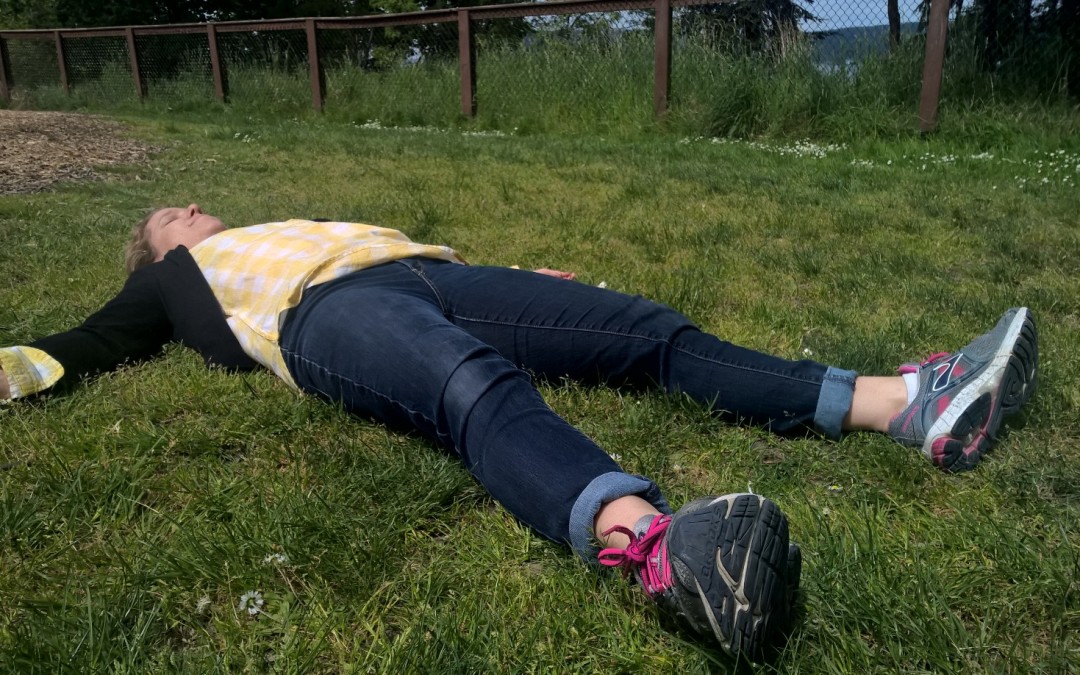I have a confession to make. I don’t love Savasana. I know. Shocking.
I think it’s the whole idea that I am “supposed to” let go. Sit in meditation and watch my thoughts arise, linger, and pass through? Sure. But lie there at the end of a yoga practice and just…let go? No thank you.
I mean, I know how to lie there and not fidget. I know how to be still and watch the busyness of my mind. I have been practicing yoga for a long time. I have lain through hundreds, if not thousands, of Savasanas at the end of yoga classes. But I could probably count on one hand the number of times I have had a truly/no kidding/melt into the floor/completely let go kind of Savasana.
I have come to accept this about myself. And I have started speaking to it in my classes, because I guarantee that if I am having that experience, some of my students are too. And they could be doing what I have done for years, which is, pretend to like Savasana. And feel guilty (or like a bad yogi) for not.
Many of us are drawn to yoga practice because an embodied practice – moving and breathing together, practicing and cultivating awareness through the movements of our bodies – makes it easier to let the mind quiet. Sometimes moving mindfully is just what we need to let our thoughts settle down for a time. And sometimes, after a movement practice, we feel more connected, whole, integrated, our breath easier, our mind able to settle into stillness more easily, and yes, enter into that release at the end of our class that is Savasana – and…We. Let. Go.
But sometimes, we feel connected and whole, we have moved and breathed our way through our practice, we feel great, and then…we come into stillness at the end, and suddenly we notice how busy our mind is.
I had a student in my last Mindfulness Based Stress Reduction (MBSR) series who was a yogi. She liked a really intense, athletic, vigorous yoga practice, and she told me that she was the yogi who hated Savasana. She couldn’t be still. One day, she injured herself, and couldn’t do the vigorous yoga practice that she loved, and her teacher told her she needed to now go learn how to meditate and be still. That’s what had her show up in my MBSR class.
The first few classes were really difficult for her. But she stuck with it, and as the series went on, she was able to sit. To be with the restlessness. To be with the discomfort that arose. And by the end of the series, she felt like she was really able to be with herself in a place of stillness in a whole new way, allowing for the whole of her experience.
So what do you do when you don’t like Savasana?
First of all, you could give up self-judgment. Guess what? Sometimes it is hard to be with yourself. I think it takes a real act of courage to come to a yoga and meditation practice and slow down, and notice, and be with the discomfort of our internal experience. Let’s get real and acknowledge that a practice of awareness is not always about love, light, bliss, and joy.
If you have been practicing for any length of time, you will experience a whole range of different things. Restlessness. Frustration. Anxiety. Sadness. Anger. Agitation. A whole realm of human experiences. If we are always seeking bliss, we could bypass and miss the gifts that are available in noticing, acknowledging, and being present with many difficult things that are simply a part of being human.
Second, if you, like me, find it difficult to relax in Savasana, or that it brings up uncomfortable feelings, or if you simply feel restless, you could use your breath to help settle the mind. Perhaps resting hands on the belly and feeling the movement of the breath in and out. Perhaps taking slow, steady breaths, with an emphasis on the exhale. You could even send the exhale slowly out through the mouth. This kind of breathing is soothing to the nervous system, and may help you relax.
Third, try connecting with the body. You might slowly scan through the body, starting with your toes and working your way up, noticing each body part and the sensations that accompany them. If the mind wanders, you just gently come back to observing the sensations in each part of your body, picking up again in the place where you last left off.
In any case, you might try being patient with yourself. Instead of trying to let go, see if you can let be instead. Noticing and allowing your body and your mind to be just as they are, right in that moment. Doing your best to acknowledge yourself for taking time for the courageous work of paying attention.
When we can be with what is difficult in our practice, we begin to learn how to be with what is difficult in our lives, from a place of allowing, acceptance, and grace.
To all of us and the courageous work of cultivating awareness,
Erin






